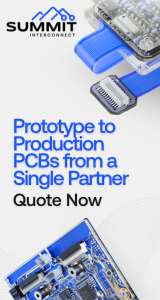|

|
|
| Ask the Experts | |||||||
|
|||||||
|
October 18, 2017 - Updated September 14, 2008 - Originally Posted Lead Free Dross RemovalHow can we reduce dross in our Lead Free Wave Soldering process? M. K. |
|||||||
| Expert Panel Responses | |||||||
|
Dross is formed through oxidation when the molten alloy is exposed to the oxygen-rich environment. There are many variables that contribute to the production of dross, some of which are: The alloy type you choose may be more susceptible to dross formation than other lead-free alloys. Often, the solder pot temperature is increased to provide better solderability for lead-free alloys; however, excessive solder temperature also contributes to an increase in dross accumulation Turbulence in the wave, whether it comes from the pumps, or is a result of the continuous cascading motion of the alloy over the flow duct is a large contributor - keep the solder pot properly topped-up, and flow ducts properly adjusted to minimize and protect the cascading areas. Excessive flux on a PCB is carried into the wave, exacerbating the creation and accumulation of flux. If you experience heavy smoke production, and/or hear a sizzle when the board contacts the wave, they you are carrying too much flux into the wave. Confirm proper process parameters.
President FCT Assembly Mike Scimeca created FCT Assembly after the purchase of Fine Line Stencil, Inc., and consists of two major operations: stencil manufacturing and the manufacturing of electronic assembly products such as solder paste, flux and solder bar.
Dross in the lead free wave soldering process can be reduced by as much as 90% by having a nitrogen "blanket" over the solder pot. That will cut off the air surrounding the pot, and thus less oxidation of the solder alloy
Managing Director, Asia Pacific ECD EH Lim has been in the PCB Assy industry since 1985, starting at Thomson/Singapore for 5 years before moving to Electrovert Asia Pacifc. Lim was Sales Director for Vitronics Soltec prior to joining ECD in 2007 as Managing Director for Asia Pacific.
Wave soldering has always wasted anywhere from 40% to 75% of solder due to dross formation. With the advent of the use of lead free solder which is far more costly and with the seemingly ever increasing cost of metals, dross formation and the high level of waste it causes has become a major cost factor. Historically there have been a number of processes such as powders and dross squeezers, these half steps can reduce dross slightly but are only partially effective. In the case of dross squeezers for example, the metal is still partially oxidized and will reduce overall solder quality, in addition, in some areas their use requires a license to act as a recycler. In the last two years P. KAY Metal of L.A. California has introduced a patent pending material called MS2. This material does not mix with the solder but it totally eliminates dross formation thus reducing solder use by up to 75%. This process has been adopted by a number of EMS companies with its use growing substantially over the past year. Using companies report major cost savings as well as improved solder joint quality and appearance due to soldering in a dross free environment. MS2 is available in the USA, Mexico, China, Singapore and Taiwan. It will soon be available globally. A complete description of MS2 along with demonstration videos can be seen at the Company's web site. (By way of disclosure I have been intimately involved in this products market entry, because of this I can personally attest to its effectiveness)
President and Founder Fein-Line Associates Mr. Feinberg is a 52 year industry veteran and President and founder of Fein-Line Assoc, a consulting group serving the Global Interconnect and EMS industries.
Hundreds of customers worldwide have found the best way to handle dross on your wave is to mechanically recover the pure solder which will be between 80% and 90% of the dross by weight. Using and EVS Solder Recovery System is fast and simple and will recover 50% to 75% of this solder from the dross by weight in only a 6 to 10 minute cycle with no extra work than what you are doing now when you dedross. The ancillary benefits of using a solder recovery system are many and documented. You will get a much cleaner wave which will reduce shorts and bridging on your PCB leading to significant reductions in rework. As you have a cleaner wave you will get less maintenance on your pumps and nozzles and as you can significantly reduce the time it takes to dedross productivity will improve substantially. You are putting back in to your wave exactly the same solder that is already there with no additives in to your process. For full details have a look on the EVS website http://www.solderrecovery.com/
International Director EVS International Simon G. Norman is the international director for EVS International, the Leader in Solder Recovery.
We recommend our customers use a Top up Bar called Tin/P this in turn mixes with the solder and while improving the flow which reduces bridging at the same time as greatly reducing dross formation and the Yelow Gold oxide seen in Lead Free wave solder pots.
Technical Sales Manager BLT Circuit Services Ltd Greg York has over thirty two years of service in Electronics industry. York has installed over 600 Lead Free Lines in Europe with Solder and flux systems as well as Technical Support on SMT lines and trouble shooting.
|
|||||||
| Submit A Comment | |||||||
|
Comments are reviewed prior to posting. You must include your full name to have your comments posted. We will not post your email address. |
|
Free Newsletter Subscription
Circuitnet is built for professionals who bear the responsibility of looking ahead, imagining the future, and preparing for it. Insert Your Email Address |
|

|






